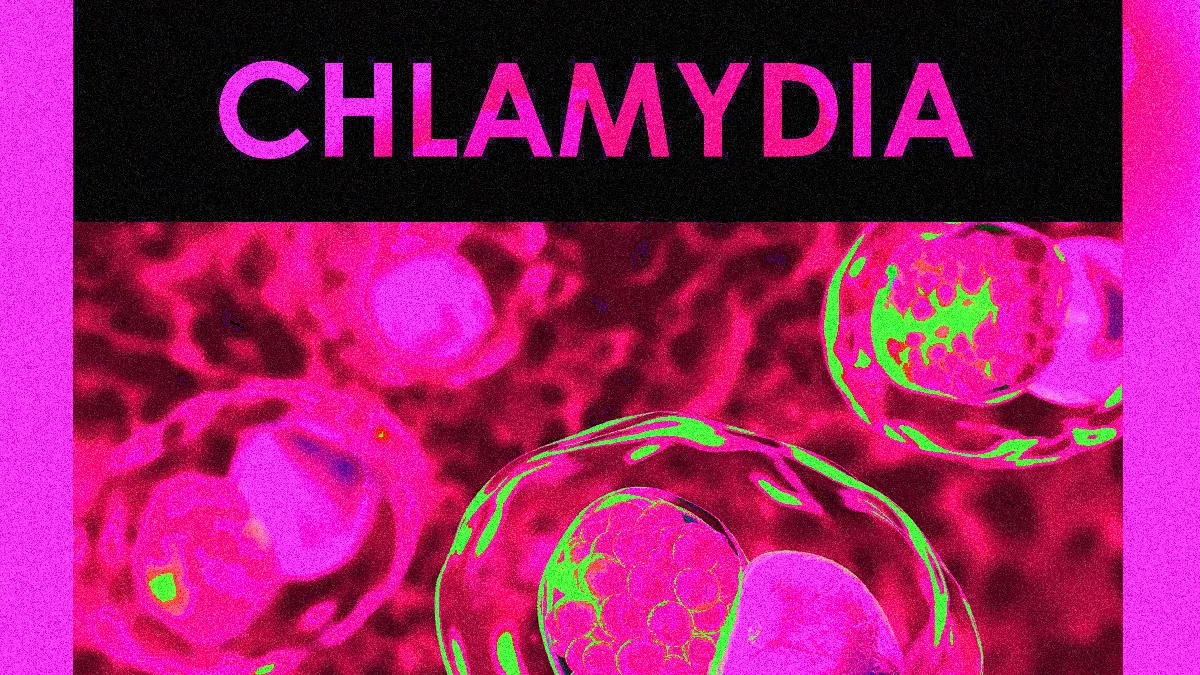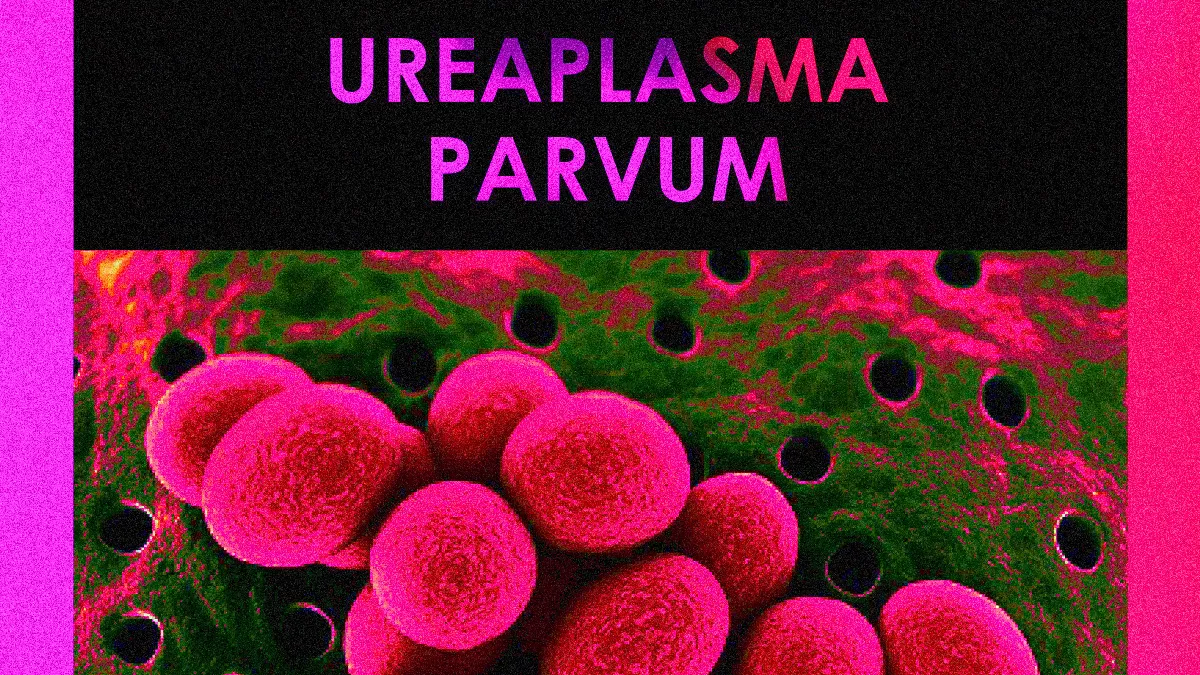Atopobium vaginae (AV) - Symptoms, Complication, Testing and Treatment
6782
Discover Atopobium vaginae, a Gram-positive bacterium linked to bacterial vaginosis (BV), affecting treatment and associated with complications.

An Overview of Atopobium vaginae
Atopobium vaginae is a recently identified bacterium commonly found in women with bacterial vaginosis (BV). It is a Gram-positive, anaerobic bacterium that thrives without oxygen. Atopobium vaginae is part of a complex bacterial community known as a biofilm, which serves as a protective barrier for bacteria.
In cases of BV, the natural bacterial balance in the vagina is disrupted, leading to an increase in Atopobium vaginae. This bacterium has been linked to complications such as pelvic inflammatory disease and preterm delivery. Additionally, its ability to form biofilms can complicate BV treatment, as these structures help protect the bacteria and contribute to treatment resistance.
Get Tested and Treated for Atopobium vaginae at PULSE Clinic
Contact us at info.bkk@pulse-clinic.com or chat on your preferred platform:
![]() +66 65 237 1936
+66 65 237 1936  @PULSEClinic
@PULSEClinic ![]() PulseClinic
PulseClinic
Is Atopobium Vaginae Sexually Transmitted?
Atopobium vaginae is not considered a sexually transmitted bacterium. It is a normal part of the vaginal microbiota and can be found in the vagina of many women, including those who are not sexually active. However, in cases of bacterial vaginosis (BV), there is an overgrowth of certain bacteria, including Atopobium vaginae, which can cause symptoms and complications.
The exact causes of BV are not fully understood, but it is believed that changes in the vaginal environment, such as pH imbalance or a decrease in beneficial bacteria (such as Lactobacilli), can contribute to the overgrowth of bacteria like Atopobium vaginae. Sexual activity, multiple sexual partners, and douching have been associated with an increased risk of developing BV, but it is not considered a sexually transmitted infection (STI) in the same way as infections like chlamydia or gonorrhea.
It's important to note that although Atopobium vaginae is not considered an STI, sexual activity can still impact the vaginal microbiota and contribute to the development or recurrence of BV. Using barrier methods such as condoms and maintaining good genital hygiene can help promote a healthy vaginal environment. If you have concerns about your sexual health or symptoms related to your vaginal health, it's best to consult with a healthcare professional for an accurate diagnosis and appropriate treatment.
Window Period of Atopobium vaginae (AV) Infection
Typical Duration:
- The window period for Atopobium vaginae infections can vary, generally ranging from 2-3 days to several weeks after exposure.
- Symptoms may develop quickly, often within 5 to 14 days, but some individuals can remain asymptomatic for longer periods.
Early Symptoms:
- Early signs of Atopobium vaginae infection may include:
- Abnormal vaginal discharge (often with a fishy odor)
- Vaginal irritation or itching
- Pain during intercourse
- In some cases, there may be no noticeable symptoms at all.
Factors Influencing the Window Period:
- Individual Health Status: Women with compromised immune systems or other underlying health conditions may exhibit symptoms more quickly.
- Hormonal Changes: Fluctuations in hormones, such as those occurring during menstruation or pregnancy, can influence the timing and severity of symptoms.
- Microbiome Composition: The presence of other bacteria in the vaginal microbiome can affect how quickly symptoms develop.
How do I get an infection from Atopobium vaginae?
Atopobium vaginae are typically present in the vagina of many women, including those who are not experiencing any symptoms or infections. It is considered a normal part of the vaginal microbiota. However, in some cases, an overgrowth of Atopobium vaginae, along with other bacteria, can lead to bacterial vaginosis (BV), which is an infection.
The exact mechanisms by which an overgrowth of Atopobium vaginae occurs are not fully understood. However, certain factors have been associated with an increased risk of developing BV, including:
- Vaginal pH imbalance: The vagina has a slightly acidic pH, which helps maintain a healthy balance of bacteria. Any disruption in the pH balance can create an environment conducive to bacterial overgrowth, including an increase in Atopobium vaginae.
- Disruption of the vaginal microbiota: Healthy bacteria, such as Lactobacilli, in the vagina, helps maintain a balanced ecosystem. Atopobium vaginae and other bacteria may overgrow due to this imbalance, which can be a result of factors like antibiotic use, douching, or hormonal changes.
- Sexual activity: While not considered a sexually transmitted infection (STI), sexual activity has been associated with an increased risk of BV. It is believed that the exchange of vaginal fluids during sexual intercourse can disrupt the vaginal microbiota and contribute to bacterial overgrowth.
- Other factors: Certain behaviors or conditions, such as having multiple sexual partners, using certain hygiene products (e.g., scented soaps or vaginal sprays), smoking, and having a weakened immune system, may also increase the risk of BV.
It's important to note that only some people who have these risk factors will develop BV, and the exact causes and triggers can vary from person to person.
What medical conditions are caused by Atopobium vaginae infections?
Certain factors and conditions have been associated with an increased risk of developing such infections. These include:
Bacterial Vaginosis (BV): Atopobium vaginae is frequently detected in cases of bacterial vaginosis, which is characterized by an imbalance in the vaginal microbiota. BV occurs when there is an overgrowth of certain bacteria, including Atopobium vaginae, and a decrease in the beneficial lactobacilli bacteria normally present in the vagina.
Sexual Activity: Sexual activity, especially unprotected intercourse or having multiple sexual partners, has been associated with an increased risk of developing Atopobium vaginae infections. However, it's important to note that Atopobium vaginae is a normal constituent of the vaginal microbiota in some individuals and does not always cause infection.
Hormonal Changes: Hormonal changes, such as those occurring during pregnancy, menstruation, or menopause, can alter the vaginal environment and increase the risk of developing Atopobium vaginae infections.
Antibiotic Use: The use of certain antibiotics, particularly broad-spectrum antibiotics, can disrupt the balance of the vaginal microbiota and lead to an overgrowth of Atopobium vaginae and other bacteria associated with BV.
It's important to remember that not everyone with Atopobium vaginae present in their vaginal microbiota will develop an infection or experience symptoms. The development of an infection may depend on a combination of factors, including the individual's overall health, immune response, and the presence of other contributing factors. If you suspect you have an Atopobium vaginae infection or are experiencing symptoms, it is recommended to consult with a healthcare professional for proper diagnosis and treatment.
Trust PULSE CLINIC to take care of your health like other 45000 people from over 130 countries. We provide discreet professional service with high privacy. Here to help, not to judge.
What are other bacteria associated with Atopobium vaginae?
Atopobium vaginae is often found in conjunction with other bacteria that make up the vaginal microbiota. In cases of bacterial vaginosis (BV), a condition characterized by an overgrowth of certain bacteria in the vagina, Atopobium vaginae is frequently detected alongside other bacteria. Some of the common bacteria associated with Atopobium vaginae and BV include:
Gardnerella vaginalis: This bacterium is considered a key player in the development of bacterial vaginosis. It is often found in high numbers in women with BV.
Prevotella species: Prevotella bacteria are anaerobic bacteria that are commonly associated with BV. They thrive in environments with reduced oxygen levels.
Mobiluncus species: Mobiluncus bacteria are anaerobic bacteria that are frequently present in cases of BV. They may contribute to the characteristic symptoms of the condition.
Mycoplasma hominis: While not as commonly associated with BV as the previously mentioned bacteria, Mycoplasma hominis has been detected in some cases of bacterial vaginosis.
It's important to note that the composition of the vaginal microbiota can vary among individuals, and the presence of specific bacteria can vary based on various factors, including the overall health of the individual and other environmental factors.
PULSE Teleconsult: Connect with Doctors Anytime, Anywhere!
Sometimes you might not be able to go to a STD clinics when you have concerns about your health. PULSE now offers PULSE Telemedicine & Teleconsult, enabling both new and existing patients to connect with doctors from 16 branches across 6 countries during clinic hours for non-emergency consultations. After the consultation, medications are delivered directly to the patient's doorstep.
3 Easy Steps to Get a Teleconsult with PULSE!
- Connect with us Either on Whatsapp, Line App to Chat with us or call us to talk with our staff to request teleconsult
- Verification & Consultation Our team will guide you through the verification process before your online consultation. Our doctors provide virtual consultations via available platforms, just like a traditional visit—only from the comfort of your home! Access care anywhere, anytime.
- Get Your Treatment From Home! If your doctor determines that medication is necessary, they will provide you with a medical certificate and prescription. Your medication can be delivered to your address through our online delivery service, or in some cases, you may choose to use the prescription at a local pharmacy. For certain conditions, further lab tests may be required, and the doctor may recommend scheduling an appointment at one of our clinics near you!
Test of Cure After Treatment with Our Teleconsult Services: Ensuring Complete Recovery
After completing treatment through our teleconsult services, your doctor may recommend a PCR test as a follow-up test of cure. This is to ensure the effectiveness of the treatment and that the prescribed medication has successfully eliminated the infection. We prioritize your health by confirming that no infection remains in your system, helping to prevent persistent or recurrent infections, complications, or the development of drug resistance. Typically, this test is performed around three weeks after your final day of treatment to ensure optimal results.
Teleconsult is now available for booking through our staff at PULSE Clinic. Our team will help guide you through the process to ensure your session with one of our doctors goes as smoothly as possible for you. Contact us at info.bkk@pulse-clinic.com o/ๅr chat on your preferred platform:
![]() +66 65 237 1936
+66 65 237 1936  @PULSEClinic
@PULSEClinic ![]() PulseClinic
PulseClinic
Atopobium vaginae infection in men
While Atopobium vaginae is primarily found in women, it can rarely be detected in the urogenital tract of men as well. However, its presence in men and its clinical significance are not yet fully understood. It is generally believed that the presence of Atopobium vaginae in men may be due to sexual transmission or contamination from female sexual partners.
Symptoms of Atopobium vaginae infection in men, if they occur, are not well-defined. It is important to note that most men carriers of Atopobium vaginae do not exhibit symptoms or require treatment.
In some cases, it may be associated with urethritis (inflammation of the urethra) or other mild urinary tract symptoms, but more research is needed to understand the exact implications in men.
As for treating Atopobium vaginae infections in men, in general, if symptoms occur or if there is an association with other urogenital conditions, a healthcare professional may consider treating the underlying cause, such as urethritis or urinary tract infections.
However, specific treatment for Atopobium vaginae alone may not be necessary.
How do I get tested for Atopobium vaginae
PCR (polymerase chain reaction) testing can be used to detect Atopobium vaginae and other bacteria associated with bacterial vaginosis (BV) in both men and women. PCR is a sensitive and specific molecular technique that can identify and amplify the DNA of particular microorganisms, allowing for their detection.
For women, PCR testing can be performed on vaginal swabs or samples collected during a pelvic examination. The swab or sample is analyzed in a laboratory, where the presence of Atopobium vaginae and other associated bacteria can be determined.
In men, PCR testing can be conducted on samples collected from the urethra, penile swabs, or urine samples. These samples are examined in the laboratory to identify the presence of Atopobium vaginae and other relevant bacteria.
PCR testing provides a reliable and accurate method to diagnose and identify the specific bacteria associated with bacterial vaginosis, including Atopobium vaginae.
Suppose you suspect you have an infection or are experiencing symptoms. In that case, it is recommended to consult with a healthcare professional who can perform the appropriate testing and provide appropriate treatment options.
Add us on Line and stay in touch.
Loading...
Clinic Locations
Loading...








